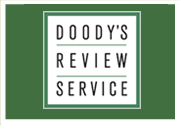|
|
|

|

|
Shared-Collection Ventures: Strategizing to Ensure Continued Access to Critical Resources
Zachary A. Valdes
Professor, Head of Acquisitions
Sam Houston State University Wyoma vanDuinkerken
Director of the Joint Library Facility
Texas A&M University
|
|
|
Editor’s note: This article is based on work originally reported in 2023 article published in JMLA. Challenge Due to mounting space reclamation pressures beginning in 2013, many of Texas’ largest medical libraries were tasked with discarding large ranges of serial print holdings. However, the majority of these holdings were connected to the National Library of Medicine’s (NLM) MedPrint retention program, which meant hospitals and medical research institutions across the country were relying on their continued preservation and accessibility. In response, the Texas A&M Joint Library Facility (JLF) staff initiated an unprecedented nationwide collection and preservation effort to save these materials and ensure the complete holdings range for all NLM MedPrint materials were preserved. These efforts would prove to be fortuitous to academic communities in the wake of an impending pandemic that saw limited accessibility to critical medical literature, and established a blueprint that other institutions may wish to replicate in preparation for future events that could pose similar challenges to resource accessibility. Action By May 2021, JLF had collected complete title runs for 202 of the 254 titles identified within the MedPrint program (12,307 volumes), which enabled JLF to fulfill critical ILL requests for these resources when few other institutions could meet this need. Despite encountering a wide range of challenges in collecting these materials from libraries across the country, JLF found success through executing a plan that involved several steps: 1. identifying critical resources; 2. conducting a thorough holdings analysis; and 3. surveying and outreach. Step 1: Resource Identification In order for JLF to develop a plan that would ensure the preservation of MedPrint periodicals, it had to first identify all applicable titles. In 2011, the NLM published a list of all titles and publication ranges that were to be retained by participating libraries, which included full publication ranges of 254 titles. While this task proved to be straightforward for JLF due to the provision of this list, the core concept could apply to any library or institution wishing to replicate a similar process. This task requires an assessment of the scope of materials to be preserved, which should include identifying key programs associated with the library, its parent institution, or any supported organizations. For example, by comparing a parent institution’s degree programs with library circulation and ILL data, libraries can determine which subject areas, titles, and publication ranges are most heavily relied upon from their print serials collection. With this information in place, the library could then begin exploring strategies to help ensure these materials are insulated from potential space reduction endeavors, such as by implementing a weeding priority system that tags these materials as being excluded from discard consideration. Step 2: Holdings Analysis After identifying periodical titles of interest, JLF compared its holdings against the full publication range of all applicable titles. JLF accomplished this by first inventorying its holdings to ensure JLF’s catalog data was accurate. Then, it compared its holdings data against holdings across other institutions as represented in OCLC or DOCLINE (medical). Finally, it cross-referenced the two lists to determine which institutions had materials that were missing in JLF. For institutions wishing to replicate this process for non-medical materials, OCLC’s Local Holdings Records (LHRs) would provide the best data pertaining to the years and volumes held at other institutions. By completing this process, libraries can effectively determine which materials are needed to complete its holdings across identified critical materials. Libraries can also establish which titles or publication ranges pose higher vulnerability to external access restrictions by identifying those materials which have lower holdings values among neighboring regional or state institutions. Step 3: Surveying and Outreach The Joint Library Facility next sought to acquire missing materials by reaching out to those libraries which indicated holdings and inquiring about their interest in sending the applicable volume ranges to JLF for long-term preservation. Because JLF is specifically constructed to function as a shared-collection facility, this component required less persuasion than that which may be needed for other institutions (e.g., material transfers between two academic libraries). However, because libraries are increasingly encountering space reduction challenges, many institutions have become increasingly open to participating in joint preservation efforts so long as they have assurance the materials will be retained long-term, and so long as they can be assured any costs associated with such ventures are minimal. With this in mind, prior to initiating this step, libraries may wish to collaborate with their institutional administration to develop policies or agreements that ensure critical materials will be safeguarded in the event space reductions or large scaled weeding efforts take place. By providing these assurances, and by offering assistance with any shipping and processing costs that may be required, libraries can improve the probability of gaining external library participation in such ventures. Conclusion As libraries increasingly encounter challenges associated with retaining critical materials amidst mounting space reduction pressures, the need for libraries to collaborate on shared collection efforts has increased. Through JLF’s efforts to collect and preserve MedPrint materials, the institution was able to ensure continued access to critical resources when few other institutions could meet this demand. While most medical and academic libraries are not positioned to facilitate preservation at this scale, the preservation blueprint established through this effort may be scaled down or modified to fit the needs of any institution based on respective circulation trends and anticipated resource provision commitments. DCT Featured Article – October 8, 2024
|

|
|
|
|
Get Involved!
|
|
Interested contributing a Featured Article like this one? Let us know! Submit an
interest form
and we'll be in touch with you soon.
|
|
|
Interested in sponsorship opportunities for Doody's Revview Services? Click here to get more information.
|
|
|
|
|
